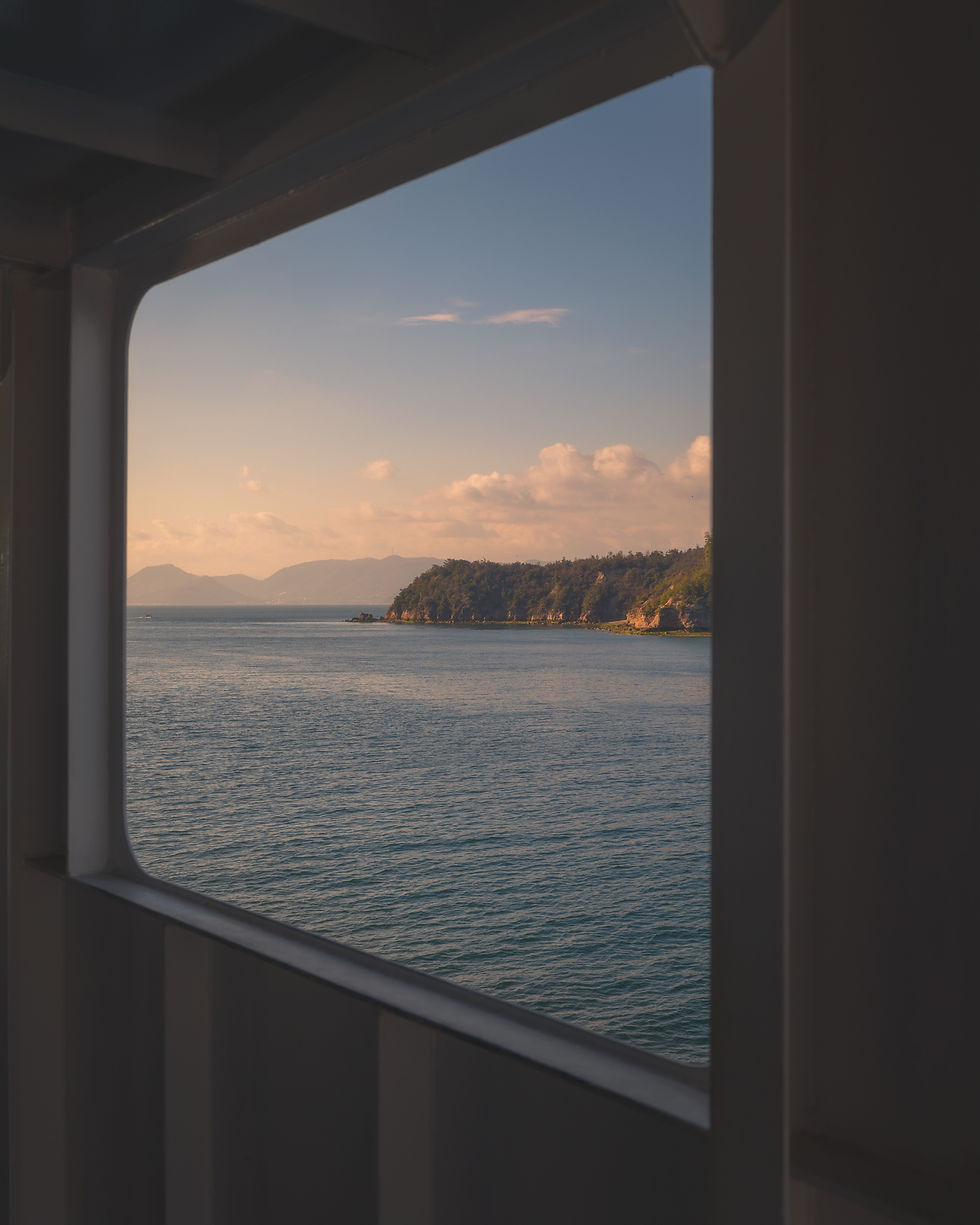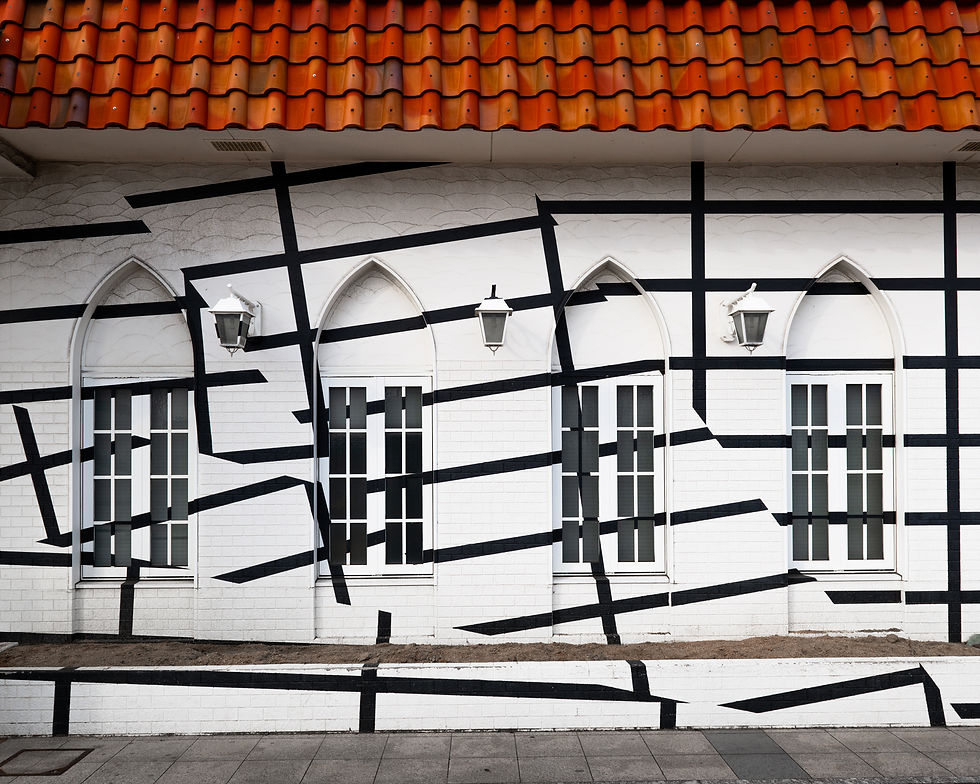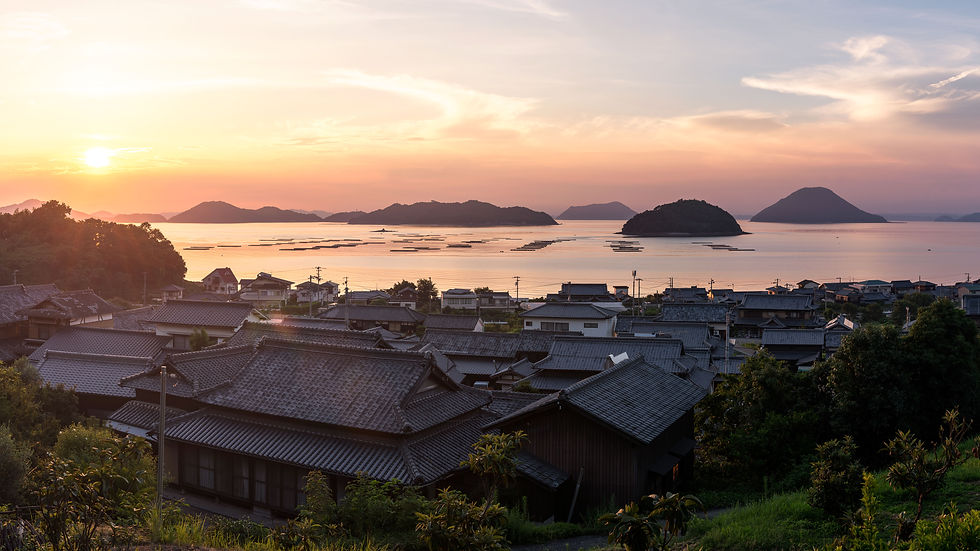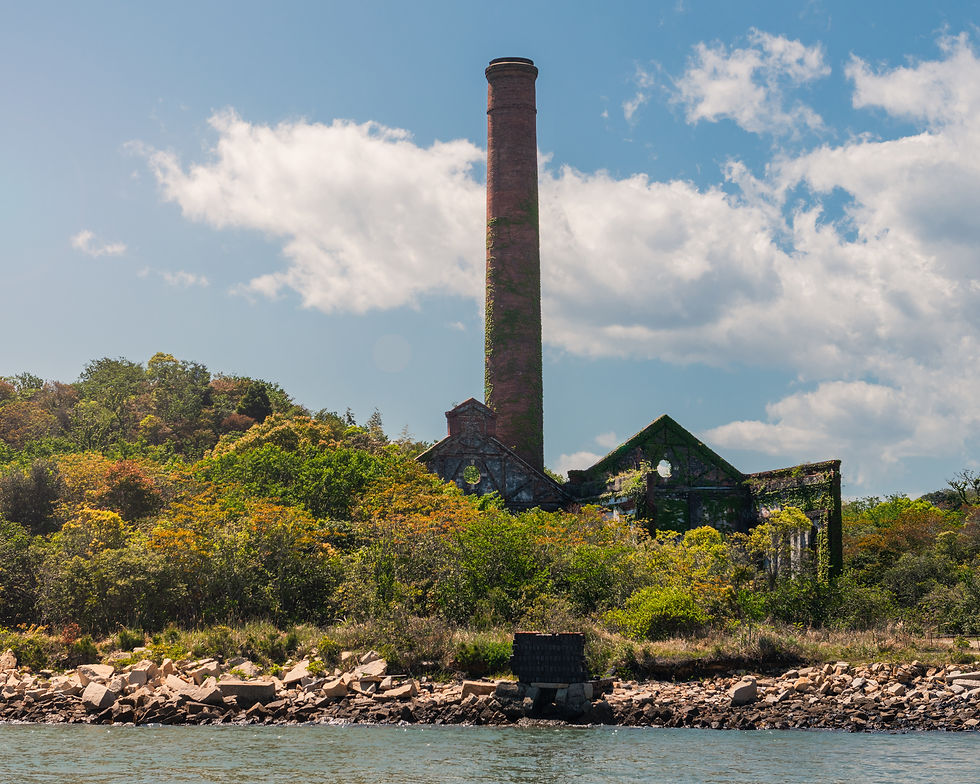Inujima: A Secluded Art Island in the Seto Inland Sea
- Jordan

- Sep 19
- 5 min read
Most art lovers who make their way to Japan dream of visiting the museums of Japan’s famous art islands. From the vibrant Yellow Pumpkin of Naoshima to the eerie heartbeats of Teshima’s Les Archives du Coeur, there is no shortage of iconic and lesser-known exhibits for visitors to explore.

Naoshima, Teshima, and the Lesser-Known Inujima of the Seto Inland Sea
With their growing popularity, it can be a little overwhelming to visit these islands, especially during the Setouchi Art Triennale, which is held every three years. However, elsewhere in the Seto Inland Sea (Setouchi), lies a hidden gem that every art lover should have on their bucket list: Inujima (犬島, which literally translates to “Dog Island”). The island is believed to have earned its name from a giant rock formation that locals say looks like a sitting dog.
As luck would have it, I had the opportunity to visit this slice of paradise one warm spring day.
Getting to Inujima from Uno Port
As is often the case, I arrived at Uno Port earlier than expected. However, this was no accident. While the port town is mostly known as the main hub for transferring to Naoshima and Teshima, it is home to some public exhibits of its own.
To see the first piece, all I needed to do was walk out of Uno Station and turn around. In 2016, Italian artist Esther Stocker transformed the tiny station into a work of art with her signature line work. What was once merely a station has become a gateway to the heart of Japan’s contemporary art scene. After taking in some of the other exhibits around the port, it was time to meet my captain. It set off to the remote art island of Inujima, home to only fifty residents and one of the most thought-provoking exhibits I have visited.

A Private Boat Ride Through the Seto Islands of Japan
As the mainland became distant, I enjoyed panoramic views of the breathtaking Seto Islands of Japan. I don’t often travel by private boat, but there is no better way to travel to the art islands than by private charter. Some travelers choose an even more indulgent route, boarding a luxury cruise or a floating ryokan experience that links multiple islands across the Seto Inland Sea.

Basking in the warmth of the sun complemented by the refreshing ocean breeze, our destination soon came into view, the museum’s prominent chimney growing more imposing with every passing moment.
Before long, we pulled up to the port, which was a stark contrast to what I had been used to on other art islands. While Naoshima’s port is a bustling transportation hub for art enthusiasts, Inujima Island was quite the opposite.

Despite the ongoing Setouchi Triennale, I was greeted by nothing more than the sound of the ocean and the call of the birds overhead.
The Inujima Seirensho Art Museum: Industrial Ruins Reimagined
After making landfall, I headed to my first destination, the Inujima Seirensho Art Museum. Unlike other museums on the art islands, designed by renowned architects, this museum does not bother with a welcoming first impression.
In fact, as you make your way across the crumbling ruins of a former copper refinery, you may even begin to question if you are going in the right direction. However, once you make your way inside, it’s almost like entering a completely different universe. While I won’t describe the exhibit itself, I will say that it simultaneously made me feel claustrophobic yet infinitesimal. With each step, I was closer to the answer but further from everything I knew.

As I found myself in the main exhibit hall, I encountered what can only be described as snippets of a half-remembered dream. While there was nothing inherently provocative or vile about the scenes, they hinted at the memories of a disturbed mind.
I won’t spoil the details of the exhibit, but after coming face-to-face with what can only be described as the unhinged ramblings of a madman, I once again found myself in the embrace of natural light. I don’t know how long I spent in the darkness, but the warmth of the sun and calm ocean breeze had never felt so welcome.
Wandering Inujima’s Open-Air Art and Island Life
I continued my journey around the island, paying a visit to each of the public art exhibits on display. The beauty of Inujima is its simplicity. Each exhibit flows perfectly into the next, allowing you to explore the island in its entirety.
After a quick visit to the beach, it was time to head back to the mainland, but not before a coffee break. I stopped by a small cafe run by a couple of wonderful locals. As I sat on the engawa, iced coffee in hand, I gave in to the slower pace offered by the island. No honking of car horns or rattling of commuter trains, only the rustling of the grass and the crowing of the roosters as the late afternoon light danced among the trees.
If heaven is real, the golden hour on Inujima is what I imagine it to be.
Where to Stay: From Kurashiki Ryokan to Benesse House
If you’re planning to visit this remote slice of paradise of Inujima, be sure to check your calendar. Unlike other art islands like Naoshima’s Benesse House Museum or Teshima’s Art Museum, Inujima is only open from April to November.
But as a guide, I always encourage guests to slow down when exploring the Seto Inland Sea. Inujima may be the highlight, but the journey is richer when you take time to enjoy where you stay. For overnight stays, Uno Port is undoubtedly the closest access point. I actually recommend staying at a luxury hotel in Takamatsu or a traditional ryokan in Kurashiki. And for those drawn to Naoshima, an overnight at Benesse House adds another layer to the art island experience.
With the right planning, these details fall into place naturally: ferries, timing, accommodations, and moments of stillness between the art. That’s the kind of seamless journey Untold Japan crafts for travelers who want to see Inujima not just as an island but as part of a living story across the Seto Inland Sea.
Inquire with Untold Japan to begin planning your Seto Inland Sea journey!










Comments